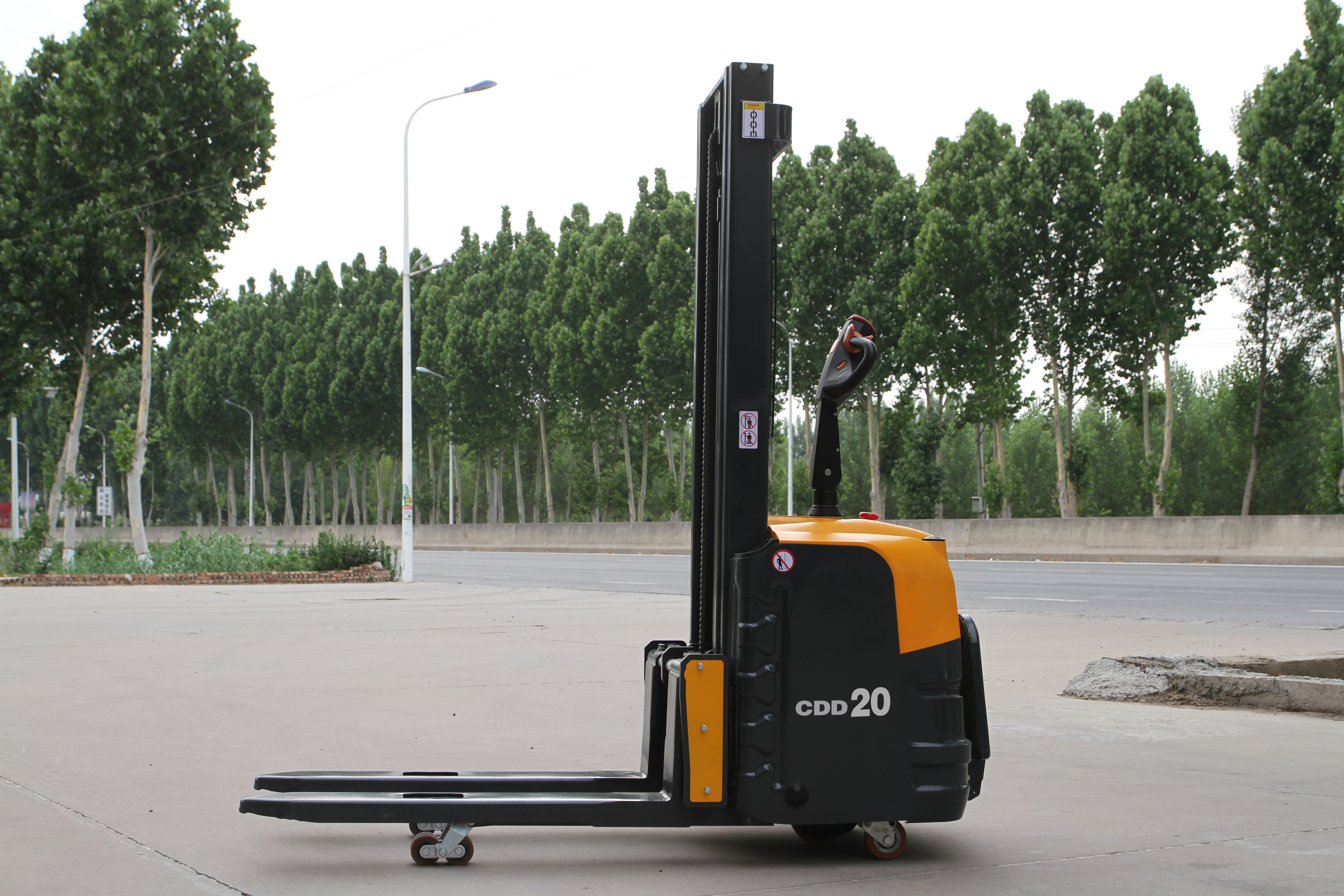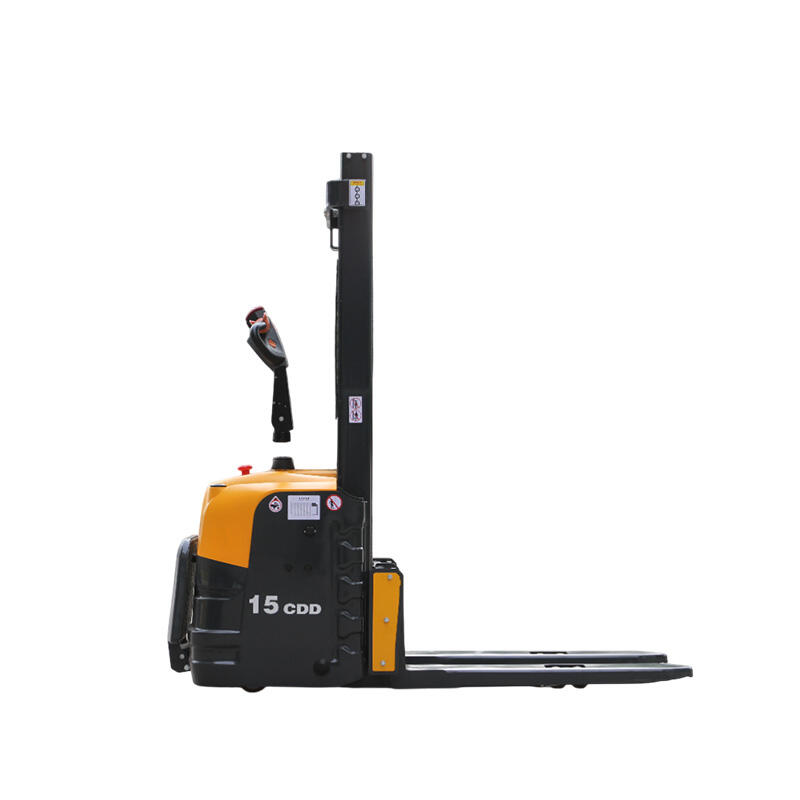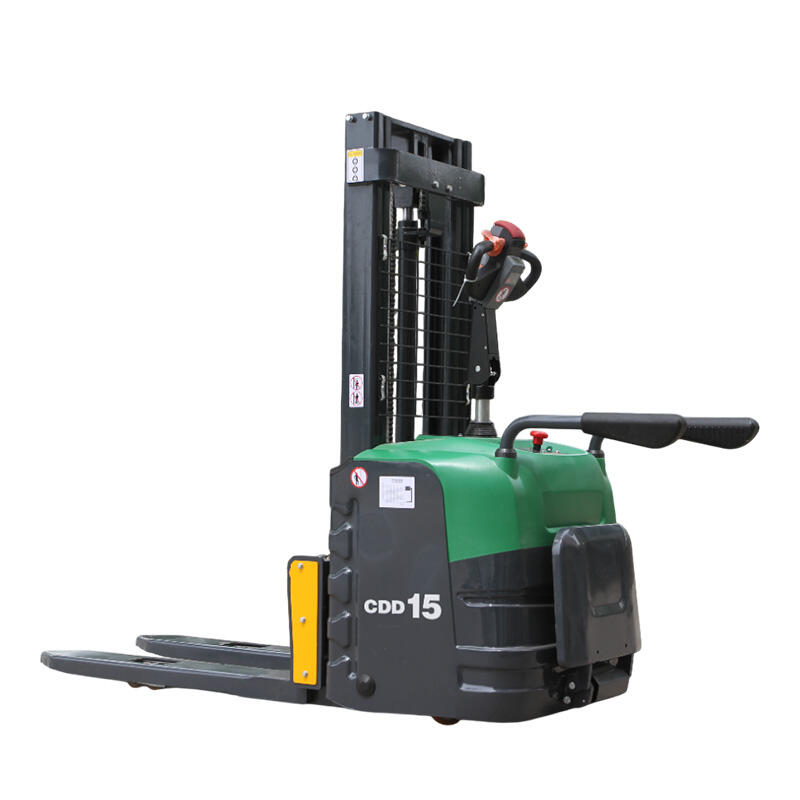A fully electric stacker is a state-of-the-art material handling equipment that relies entirely on electric power for both propulsion and lifting, representing the pinnacle of efficiency, sustainability, and operator convenience in pallet handling. Unlike semi-electric or manual stackers, which require partial manual effort, a fully electric stacker eliminates all physical strain by using electric motors for every function, making it ideal for high-volume operations in warehouses, distribution centers, manufacturing facilities, and retail environments where productivity, safety, and environmental responsibility are key priorities. This equipment is designed to handle palletized goods with precision, offering seamless movement and lifting capabilities that streamline operations and reduce operational costs over time. The defining feature of a fully electric stacker is its dual electric systems: one for moving the stacker and another for lifting the forks. Both systems are powered by a single rechargeable battery, typically lithium-ion, which provides high energy density, fast charging, and consistent performance throughout the charge cycle. The propulsion system uses an electric motor to drive the wheels, allowing the stacker to move forward and backward at adjustable speeds—usually between 3 km/h and 7 km/h—with smooth acceleration and deceleration to prevent jolting. The lifting system employs another electric motor to drive a hydraulic pump or a direct-drive mechanism, raising the forks to heights ranging from 2 meters to 6 meters, with lifting capacities varying from 1,200 kg to 4,000 kg, depending on the model. This fully electric operation ensures that both moving and lifting are effortless, enabling operators to focus on accuracy and efficiency rather than physical exertion. Lithium-ion batteries are the preferred power source for fully electric stackers due to their numerous advantages over traditional lead-acid batteries. They charge significantly faster—reaching full capacity in 1 to 3 hours compared to 8 to 10 hours for lead-acid batteries—minimizing downtime and allowing for quick top-ups during breaks. Lithium-ion batteries also have a longer lifespan, lasting up to 2,000 charge cycles versus 500 to 1,000 cycles for lead-acid batteries, reducing the frequency of replacements and lowering long-term costs. They maintain consistent power output until fully discharged, ensuring the stacker performs reliably throughout the shift, whereas lead-acid batteries often experience a drop in performance as they lose charge. Additionally, lithium-ion batteries are lighter, reducing the stacker’s overall weight and enhancing maneuverability, and they require no maintenance beyond regular charging, eliminating the need for water refills or acid checks. Maneuverability is a standout characteristic of a fully electric stacker, with its compact design and advanced steering systems enabling navigation through narrow aisles and tight spaces. Most models feature a three-wheel configuration, with the rear wheel or wheels equipped with precision steering that allows for a turning radius as small as 1.2 meters—ideal for warehouses with high-density storage and narrow aisles. The control handle is ergonomically designed, with intuitive buttons for all functions, allowing operators to maneuver the stacker with precision, even in crowded areas. Some advanced models include programmable steering modes, such as “crab steering,” which allows the stacker to move diagonally, further enhancing agility in tight corners or when aligning with racks. This maneuverability ensures that the stacker can access pallets stored in hard-to-reach areas, maximizing storage utilization and reducing the need for manual handling. Safety is integrated into every aspect of a fully electric stacker’s design, with features that protect operators, goods, and the surrounding environment. Overload protection systems continuously monitor the load weight and prevent lifting if the capacity is exceeded, reducing the risk of tip-overs or structural damage. Emergency stop buttons are prominently located on the control handle and chassis, providing immediate shutdown capability in case of emergencies. Automatic braking engages when the operator releases the control handle or when the stacker comes to a stop, preventing unintended movement. The stacker’s low center of gravity and wide base enhance stability, even when lifting heavy loads to maximum heights. Many models also include proximity sensors that detect obstacles in the stacker’s path and automatically slow or stop movement, while audible and visual alarms alert pedestrians to the stacker’s presence in busy areas. Additionally, the forks are designed with rounded edges to prevent damage to pallets or goods during insertion and removal. Operator comfort is a key focus in the design of a fully electric stacker, with features that


